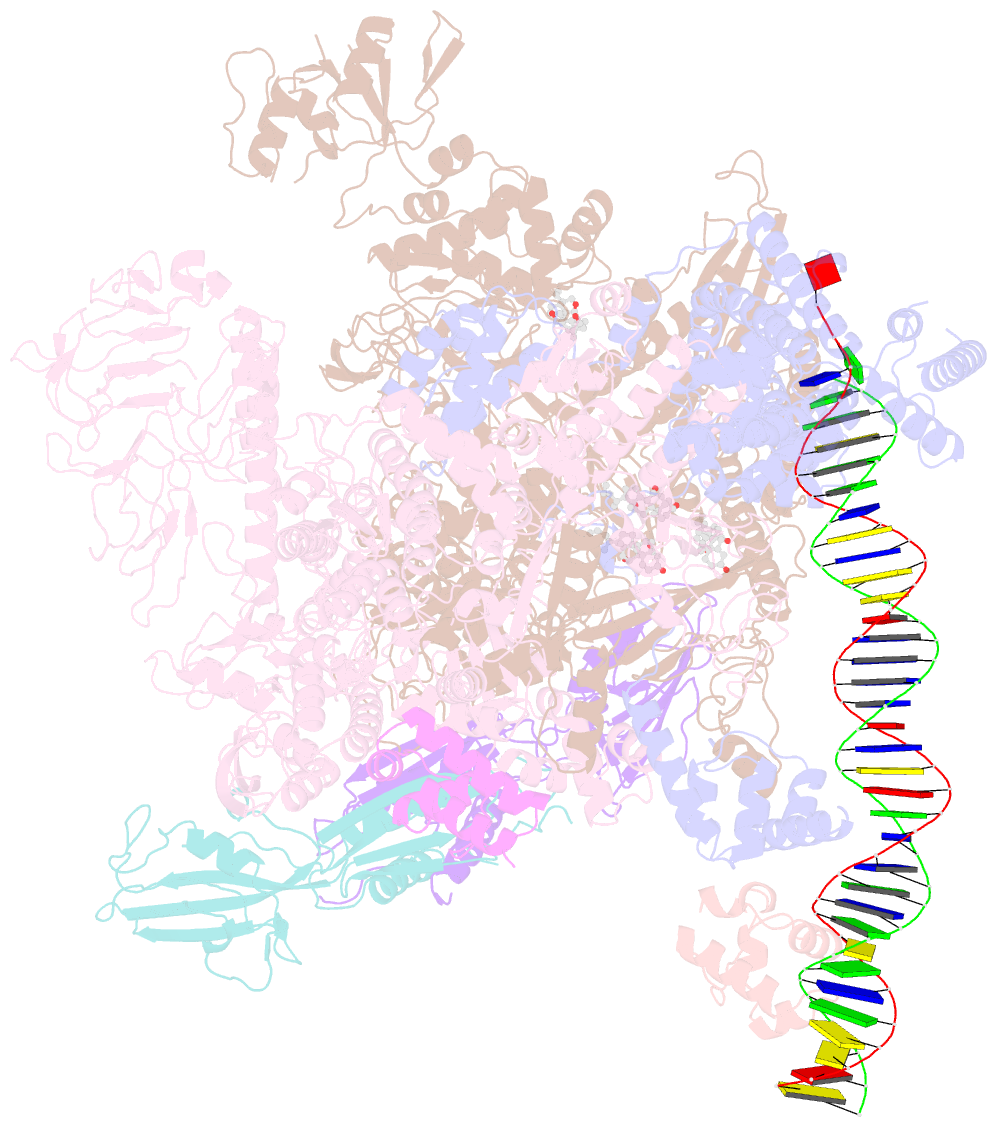Summary information and primary citation
- PDB-id
- 8to1; SNAP-derived features in text and JSON formats;
DNAproDB
- Class
- transcription-DNA
- Method
- cryo-EM (2.8 Å)
- Summary
- Escherichia coli RNA polymerase unwinding intermediate (i1a) at the lambda pr promoter
- Reference
- Saecker RM, Mueller AU, Malone B, Chen J, Budell WC, Dandey VP, Maruthi K, Mendez JH, Molina N, Eng ET, Yen LY, Potter CS, Carragher B, Darst SA (2024): "Early intermediates in bacterial RNA polymerase promoter melting visualized by time-resolved cryo-electron microscopy." Nat.Struct.Mol.Biol. doi: 10.1038/s41594-024-01349-9.
- Abstract
- During formation of the transcription-competent open complex (RPo) by bacterial RNA polymerases (RNAPs), transient intermediates pile up before overcoming a rate-limiting step. Structural descriptions of these interconversions in real time are unavailable. To address this gap, here we use time-resolved cryogenic electron microscopy (cryo-EM) to capture four intermediates populated 120 ms or 500 ms after mixing Escherichia coli σ70-RNAP and the λPR promoter. Cryo-EM snapshots revealed that the upstream edge of the transcription bubble unpairs rapidly, followed by stepwise insertion of two conserved nontemplate strand (nt-strand) bases into RNAP pockets. As the nt-strand 'read-out' extends, the RNAP clamp closes, expelling an inhibitory σ70 domain from the active-site cleft. The template strand is fully unpaired by 120 ms but remains dynamic, indicating that yet unknown conformational changes complete RPo formation in subsequent steps. Given that these events likely describe DNA opening at many bacterial promoters, this study provides insights into how DNA sequence regulates steps of RPo formation.





